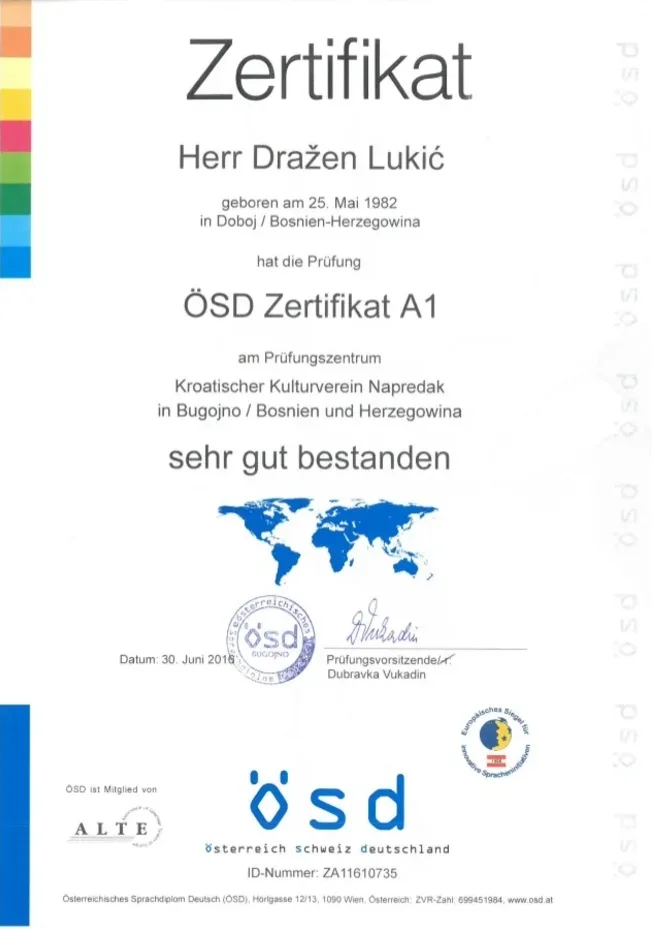Understanding the ÖSD Exam: A Gateway to Proficiency in German
The ÖSD (Österreichisches Sprachdiplom Deutsch) exam is a standardized language efficiency test created to assess and license German language skills. Recognized worldwide, the ÖSD exam accommodates numerous learners, varying from novices to advanced speakers. This short article intends to supply an informative summary of the ÖSD exam, detailing its structure, levels, preparation strategies, and frequently asked questions.
The Importance of the ÖSD Exam
In a globalized world where proficiency in numerous languages is highly valued, the ÖSD exam serves a number of essential purposes:
Accreditation of Language Proficiency: The ÖSD exam offers certificates that are recognized in Austria and other German-speaking countries, assisting in employment opportunities and university admissions.
Standardized Assessment: The exam supplies a standardized assessment of language skills, which can be advantageous for scholastic and professional purposes.
Structured Learning Path: The ÖSD offers a clear framework for language learners, directing them toward accomplishing particular language objectives through a structured curriculum.
Structure of the ÖSD Exam
The ÖSD exam is divided into different levels aligned with the Common European Framework of Reference for Languages (CEFR). Each level tests 4 essential language skills: listening, reading, writing, and speaking.
Levels of the ÖSD Exam
The ÖSD uses evaluations at six levels, representing the CEFR framework:

A1: Beginner
A2: Elementary
B1: Intermediate
B2: Upper Intermediate
C1: Advanced
C2: Proficiency
Each level has particular requirements and expectations, allowing candidates to concentrate on suitable products and practices based upon their efficiency.
Exam Components
The ÖSD exam is divided into 4 distinct components:
Listening Comprehension: Candidates listen to different audio materials (discussions, interviews, and presentations) and respond to understanding questions.
Reading Comprehension: This area includes texts of differing lengths and intricacies, accompanied by concerns that assess understanding and interpretation.
Composing: Candidates are required to produce written texts (letters, essays, or reports) depending upon the level, demonstrating their ability to convey details and arguments effectively.
Speaking: The speaking component generally includes a discussion with an inspector, needing prospects to show fluency, pronunciation, and grammatical accuracy.
Preparation for the ÖSD Exam
Getting ready for the ÖSD exam requires a strategic technique, integrating various research study approaches and resources. Here are some reliable techniques:
Research study Methods
Enroll in a Language Course: Structured courses can provide assistance and a systematic technique to language knowing.
Experiment Sample Tests: Using main ÖSD sample products can acquaint prospects with the exam format and question types.
Join a Study Group: Collaborating with peers can enhance finding out through shared understanding and accountability.
Usage Language Learning Apps: Mobile applications can support language acquisition, using vocabulary practice and interactive workouts.
Resources
Textbooks and Workbooks: Choose products that align with the target level of the ÖSD exam.
Online Platforms: Websites committed to language knowing typically offer totally free resources, including grammar workouts and vocabulary lists.
Tutoring: Personal direction from knowledgeable instructors can provide tailored feedback and targeted practice.
Tips for Success
Set Realistic Goals: Break down the preparation procedure into manageable turning points.
Engage with Native Speakers: Regular interaction with native German speakers can improve conversational abilities and cultural understanding.
Immerse Yourself in the Language: Consume German-language media-- such as films, podcasts, and books-- to improve listening and checking out abilities.
Practice Regularly: Consistency is essential in language learning; allocate time each day for practice across all 4 abilities.
Regularly Asked Questions (FAQs).
1. What are sprachzertifikat b1 between the ÖSD exam and other German language examinations?
The ÖSD exam particularly concentrates on modern German usage and culture, using an unique perspective compared to other examinations, such as the TestDaF or the Goethe-Zertifikat. Each assessment has different structures, levels, and emphasis on different abilities, dealing with specific requirements and target audiences.
2. The length of time does it take to prepare for the ÖSD exam?
Preparation time varies significantly based on the prospect's existing language abilities. Generally, it can take anywhere from a couple of months to over a year of dedicated research study to get ready for each level.
3. Exists an age limit to take the ÖSD exam?
No, there is no age limitation for prospects wishing to take the ÖSD exam. People of all ages, from kids to adults, are motivated to take part based upon their language efficiency and goals.
4. Where can I take the ÖSD exam?
ÖSD tests are administered at different authorized assessment centers worldwide. Prospects can check out the main ÖSD site to find a center near them and to examine offered dates.
5. How are ÖSD exam results scored?
Prospects get a score for each component of the exam, which is then integrated to offer an overall proficiency level. Outcomes are usually offered a few weeks post-examination.
Conclusion.
The ÖSD exam is a highly regarded language proficiency test that works as a vital tool for people seeking to demonstrate and license their German language skills. Through efficient preparation, structured learning, and access to the best resources, prospects can attain their desired efficiency level, boosting their opportunities in both scholastic and professional domains.
